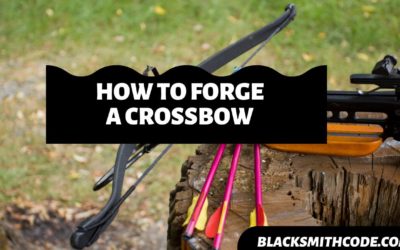Ever imagined how interesting it would be to forge a creed’s weapon? Then, let’s catch some fun by forging a hidden blade.
A hidden blade is a type of blade that is mainly used by the creed. It is a type of concealable weapon that comprises a narrow blade in a channel of the underside of a gauntlet or bracer. A spring-load mechanism controls the exit and the entry of the blade from the gauntlet.
It extends and retracts spontaneously from its position. The blade is usually very sharp and causes great damage to the victim due to the element of surprise of the tool. People use a hidden blade for self-protection.
Forging a hidden blade will offer you a lot of benefits as a blacksmith. Aside from improving your skills, it also offers you a good business option.
It is easy to forge this blade if you follow specific procedures. The stepwise guide below will help you through the forging process of a hidden blade even if you are forging it for the first time.
Instructions on How to Forge a Hidden Blade
Step 1: Get a Blade
To hasten the process of forging, you should get a blade rather than forging it. You can go through the normal process of forging a blade by getting the materials, heating it, cutting out the shape, grinding it, etc.
But to make the process faster, you can get the blade of a sword or dagger. Blades of knives are also useful.
Step 2: Cut the Size you need
There is no doubt the blade might be longer than you what you need. You can cut the blade into the size you need with a cutting tool.
Measuring the length before cutting is a good step. It will help you to know what dimensions your case should take; you know the blade will be in the channel.
Step 3: Make a Hole at the End of the Blade
You should cut out a small hole at the end of the blade. You can make use of a cutter or chisel to cut the shape. Make sure the hole is not too big, and neither is it too small; it should be large enough to allow a bolt and small enough not to allow it to slide past.
You should make sure the hole is at the center of the end part of the blade.
Step 4: Get a Flat Steel Plate and Forge
After making a hole at the end of the blade, get a flat steel plate. The flat steel plate will serve as a passageway for the blade. The process to follow is.
Quick Steps
- Get a flat steel plate.
- Cut the plate to the size of the blade and make it slightly bigger.
- Make a hole in the middle of the plate. The hole should run through the plate but should not cut the plate into two.
- The hole should be big enough to allow the free passage of a bolt.
- Add a nut to the bolt to prevent the bolt from falling off.
Step 5: Get a Wooden Case
You should forge a wooden case that will cover the steel plate blade. Making the wooden case only requires carpentry skills and creativity.
Quick Steps
- Create a rectangular wooden case that will cover the blade and the plate.
- Join the wooden case to the steel employing a glue.
- The wooden case should have an opening that allows the passage of the blade.
- Add a spring to the blade.
- Let the spring connect the bolt on the blade to the entrance of the wooden case. It will allow the blade to come out easily.
- Create a control by the side of the wooden case. This control will stop the blade from moving out unless you allow it.
Step 6: Add a Strap to the Wooden Case
You have to add a strap to the wood. The strap will allow the whole blade to attach to your arm and give you a good way to control it.
Now that you have your hidden blade forged, you should explore its uses and advantages.
FAQs
Question
Can I forge a hidden blade with a Damascus steel?
Yes, you can. Damascus steel is one of the best quality steels you would find around. It is suitable for forging varieties of blades, and the hidden blade is not an exemption to it.
If properly utilized, Damascus steel will improve the quality of your blade and make it more appealing to the sight.
Question
How long will it take to forge a hidden blade?
Forging a hidden blade is not time-consuming, depending on your level of expertise. On average, forging a single hidden blade can take about 3 hours or less. The process will be faster if you know the right techniques to use, and you have the right materials.
Question
Can I make a hidden blade for sale?
A hidden blade is a very commercial project. The blade is versatile, and it is useful for multiple purposes. Therefore, making a hidden blade for sale can yield high returns in cash.
Question
What is the standard length of a hidden blade?
There is no standardized length for a hidden blade. It can be as long as a conventional knife, but not as long as a sword or spear.
Video
Warnings and Precautions
- Be careful while finishing the knife to avoid pricking yourself accidentally.
- Follow all precautions and safety rules in the blacksmithing workshop.
- Consider the use of gloves and other protective gears.
- Ensure proper ventilation and illumination of your workplace.




